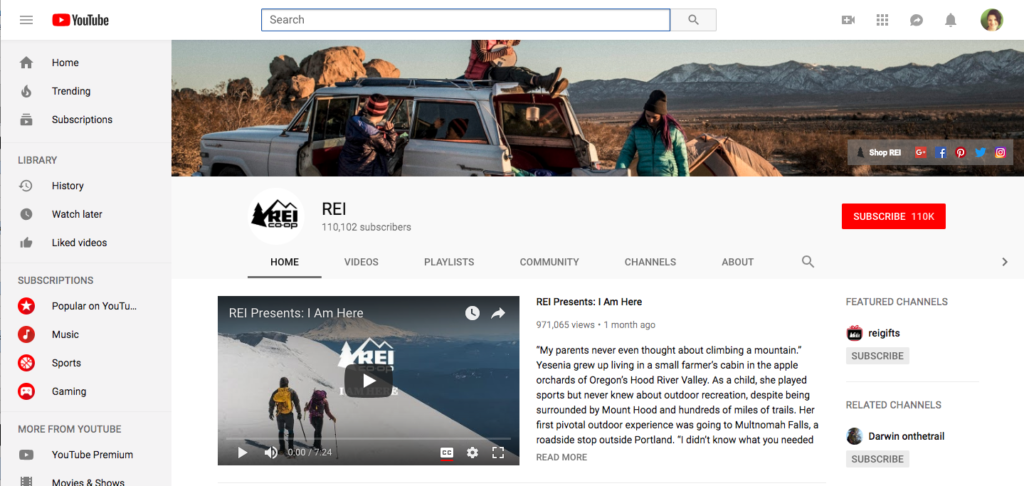10.18: YouTube
- Page ID
- 46256
Learning Outcomes
Describe the primary use of YouTube
Google purchased YouTube in 2005, and since then, it has grown to be the second largest social media platform (in terms of regular users). Interestingly, the line between Facebook and YouTube is often blurred, despite the fact that they are owned and operated by separate entities. Many people use both platforms and link content between the two. Much of Facebook’s content consists of posted videos embedded or linked from YouTube.
While we may broadly consider YouTube to be the second largest social media platform, it operates in a fundamentally different way from most social media platforms. It does not necessarily directly compete with Facebook, Twitter, or Instagram since these platforms have many features focused on messaging, whereas YouTube focuses on uploaded videos, usually limited in length, and comments on said videos. Because of this, it’s usually best to cross-post your videos from YouTube on a different platform and start discussions and conversations on other platforms (e.g., Facebook or Twitter).
Most videos on YouTube are around 5–10 minutes long, with a default limit at 15 minutes; however, you can increase this limit by verifying your account. YouTube users may comment on videos and exchange links to other content elsewhere on the web. Additionally, users may create channels and “areas” of content ascribed to certain brands or authorship. In this sense, YouTube is an excellent way to grow a brand essentially for free.
REI
REI, an outdoor recreation retailer, uses YouTube to great effect. On the home tab of REI’s YouTube channel (Figure 1), they provide a link to shop at their store, as well as links to their other social media presences. Additionally, they have featured videos, highlighting their promoted videos.

As you look through their video library, you can see that they have several categories of videos, including REI Presents, REI Camping Recipes, REI: Trailheads, and REI. They use these different channels to appeal to people with different interests within their outdoor niche.
They specifically use their REI Presents videos to tell stories of people who have accomplished outdoor feats and to inspire others.
Using YouTube
The following video (on YouTube!), discusses how to place videos on YouTube. Note the author’s emphasis on how describing and placing the video will help grow its audience and overall viewership.
An interactive or media element has been excluded from this version of the text. You can view it online here: http://pb.libretexts.org/bcsfm/?p=464
YouTube is an excellent platform to place content, but it arguably is not a good choice for creating discussions around the content. In this way, Facebook—or another sharing platform—should be combined with YouTube. You can embed YouTube videos directly into your website as well, which optimizes YouTube’s versatility. However, another thing to keep in mind is that, like Facebook, Google harvests data from its users and sells it to advertisers and other marketing firms.
When assessing the usefulness of YouTube, you should keep the pros and cons listed in Table 1 in mind:
| Table 1. Pros and Cons of YouTube as a Social Media Platform | |
|---|---|
| Pros | Cons |
| Ease of use | Data capturing and privacy concerns |
| Integration with other social media and websites | Sheer size and volume of content requires careful placement |
| Massive audience | Creating videos requires unique skill and tools when compared to business writing |
Practice Question
- YouTube. Authored by: Freedom Learning Group. Provided by: Lumen Learning. License: CC BY: Attribution
- REI Presents: I Am Here. Provided by: RIE. Located at: https://youtu.be/T1A87rMDn0c. License: All Rights Reserved. License Terms: Standard YouTube License


